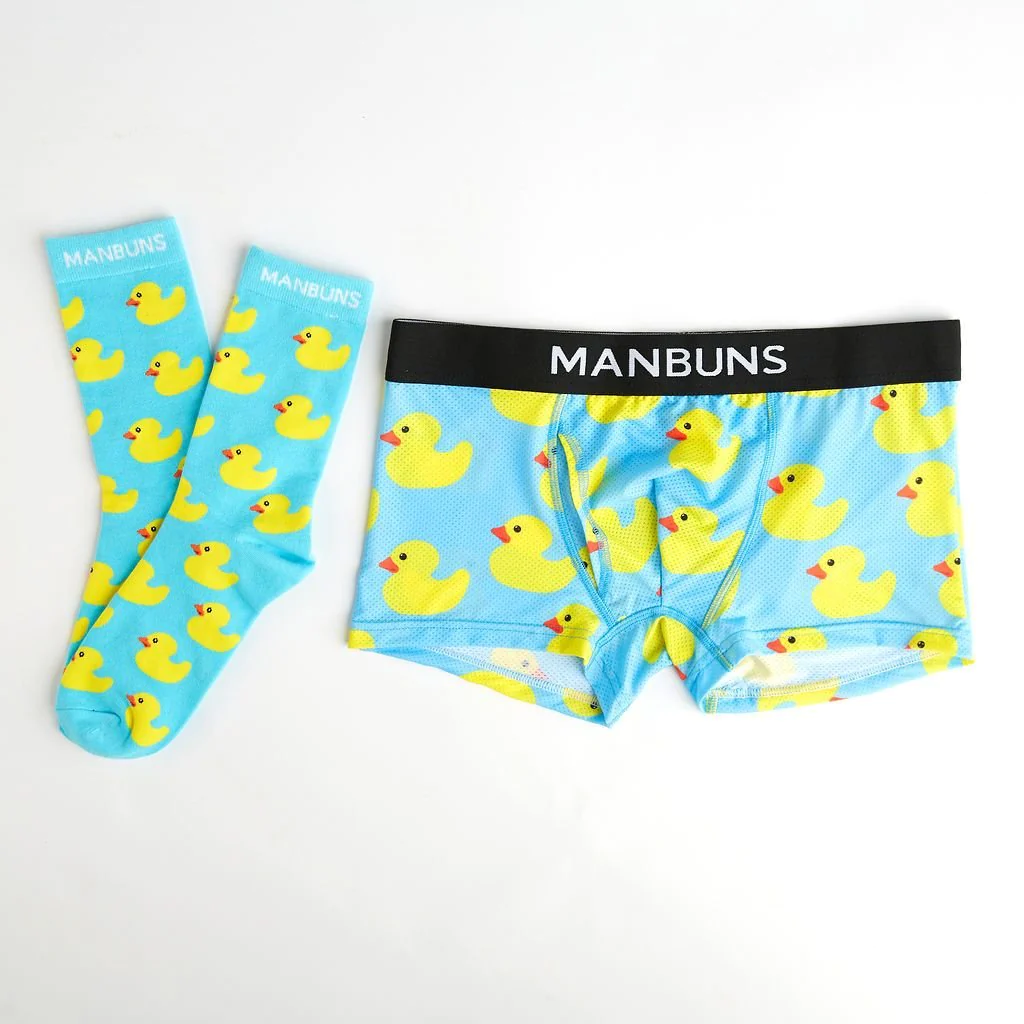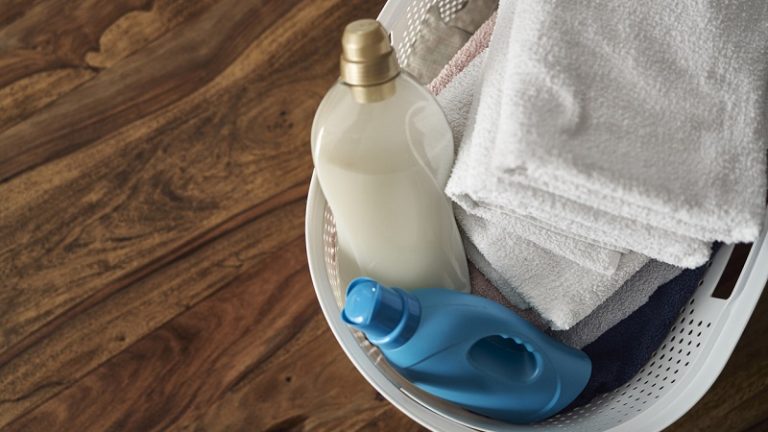Can you wash socks and underwear together?
For many of us, socks and underwear are some of the most frequently worn and frequently washed pieces of clothing. It just makes sense that we would want to save time and wash them together in the same load. However, many laundry experts recommend against this practice.
In this article, we will look at the historical and practical reasons why people say you shouldn’t wash socks and underwear together. We’ll also discuss whether modern detergents and washing machines now make it possible to safely and effectively clean your socks and panties in one wash.
Why People Traditionally Kept Socks and Underwear Separate
Contents
The main reason why many laundry experts historically warned against washing socks with underwear is the vast differences in how dirty they get and how often they are worn and washed.
For example, the average person might wear the same pair of underpants for 1-3 days before needing to wash them. But we tend to wear the same pair of socks for only 1 day before they start to smell and need laundering.
As a result, people tended to have set laundry routines like:
- Washing underwear every 2-3 days
- Washing socks daily or every other day
Since the socks needed more frequent and intensive washing, it didn’t make sense to combine them in a load with underwear. The washing time, temperatures, and detergents needed would be quite different.
Beyond washing frequency, traditional washing methods and fabrics also made separating socks and underwear important. For example:
- Cotton socks were often washed by hand or in hotter temperatures to disinfect and clean sweat and odor.
- Silk or lace women’s underwear required gentler cold washing by hand.
- The different materials and garment construction meant clothes could catch and pull on each other, causing damage.
- Color bleeding was also more of a concern with traditional dyes and washing techniques.
So for all these historical reasons, best laundry practices dictated that socks and underwear must be washed separately. But do these concerns still apply in the age of modern fabrics, garments, detergents, and washing machines?
Key Differences Between Socks and Underwear
While laundry techniques have improved, there are still some inherent differences between socks and underwear that make washing them together tricky. Being aware of these key differences can help you decide if you want to mix them in the wash or not.
Washing Frequency
As mentioned earlier, the average person still wears and washes socks much more frequently than underwear. Socks need laundering after just one wear for most people, while underwear may last 2-3 wears before washing. This discrepancy remains one of the strongest cases for keeping them separate.
Fabric Type
While cotton is now commonly used in both socks and underwear, the construction is quite different. Underwear, especially women’s, often contains more delicate fabrics and lace like silk or nylon. The rougher texture of socks can snag and damage these more fragile materials.
Color
Underwear tends to be available in an even wider variety of bright colors and prints than socks. The potential for color bleeding and transfer is higher when you mix brightly colored socks and underwear in one wash.
Temperature
Because socks are worn directly in shoes and get sweaty, they often benefit from washing in hotter temperatures to fully sanitize and remove odors. Underwear and some athletic socks may be better washed in warm or cold water instead.
Lint
The soft fibers in underwear can generate lint that gets trapped in the rougher knit fabrics of socks. Washing your rougher textured socks and smoother underwear separately avoids excessive lint and pilling.
Best Practices For Washing Socks
If you do opt to keep socks separate from your underwear, here are some top tips for getting them clean, fresh, and lint-free:
- Change your socks daily, or every other day at a minimum if you don’t sweat much. Having enough pairs allows more laundering without wearing socks prematurely.
- Pre-soak heavily soiled athletic or work socks in warm water before washing. This helps release dirt and sweat before it enters the machine.
- Don’t use chlorine bleach on your socks as this weakens fibers over time. Oxygen-based bleaches are gentler.
- Wash cotton, wool, or bamboo sock yarn on a Cotton or Bulky cycle and synthetic athletic socks on Synthetics. Match temperature and spin speed to fabric type.
- Air dry or dry on low to avoid excessive heat damage to elastic and fibers, especially with wool socks.
- Toss single socks in a small mesh bag to keep them contained during washing.
- Use an anti-residue detergent and do an occasional towel wash to minimize lint and residue that clings to socks.
Proper Care For Underwear
To get the most wear out of your underwear and ensure it looks and feels its best, follow these laundry guidelines:
- Change underwear daily or every 2-3 days for minimal odor and staining. Having multiple pairs makes this easier.
- Check care labels to determine ideal washing temperatures and methods. Synthetics, cotton blends, and microfibers often do fine in warm or cold water.
- Handwash delicate silk underwear using a mild detergent or even shampoo to gently lift odors and stains.
- For machine washing lace or silk underwear, use a mesh wash bag for protection and to catch loose threads or trim.
- Pre-treat any blood or vaginal stains on cotton underwear as soon as possible by soaking in cool water before washing normally. Hot water can set stains.
- Avoid chlorine bleach on colored underwear. Oxygen-based bleaches are effective yet gentler on fabrics and dyes.
- Line or flat dry underwear to avoid extreme heat damage. For items like sports bras, lay flat initially so cups dry in the proper shape.
Is Washing Socks and Underwear Together Okay?
So now that we’ve looked at the key differences in washing needs and concerns about combining socks and underwear, is it actually okay to wash them together?
The answer is that it can be done successfully if certain precautions are taken:
- First, always separate by fabric type. Never wash cottons with synthetics or silks.
- When mixing cotton socks and underwear, use the Cotton or Cottons Heavy Soils cycle on warm or hot and high spin speed. This provides enough agitation and heat.
- If washing synthetic athletic socks and underwear, the Synthetics cycle on warm should suffice.
- Be diligent about color sorting to prevent bleeding of bright sock dyes onto paler underwear.
- Wash very dirty socks separately or pre-soak them before adding to a load with lightly worn underwear.
- Use a pure detergent without excess chemicals, enzymes, or fragrances that can irritate intimate areas.
- Clean the washing machine regularly, especially the lint and residue that gathers in the rim, to cut back on sock lint transferring to underwear.
- Inspect clothes for damage before drying and separate lint-covered items.

When To Wash Socks and Underwear Separately
While washing socks and underwear together is possible with the right precautions, you may find that keeping them separate works better for your situation.
It’s smart to launder socks and underwear separately if:
- Someone in the household has sensitive skin that reacts to detergent residues that build up more when washing these items together.
- You notice excessive pilling or damage to underwear when mixed with rougher textured socks.
- Whites are looking dingy or colors bleeding due to improper sorting.
- Odors are persisting in underwear or socks even after washing together.
- You use specific garment bags or delicates cycles that don’t accommodate socks well.
- Your current washing machine is older and not able to adequately wash mixed loads.
- You simply prefer separating loads by item type out of habit or to stay organized!
The Bottom Line
While challenging, washing socks and underwear together is certainly possible with the right precautions if you want to maximize efficiency. But keeping them separate remains a smart strategy if you’re noticing issues with wear, stains, or odors.
Test out mixed loads while inspecting carefully afterwards. This will tell you if your detergent, machine, and laundry habits allow socks and underwear to be washed together successfully or not. Adjust your approach based on the results.
At the end of the day, do whatever routine makes the most sense for your schedule, laundry setup, and personal preferences. The most important thing is that your socks and delicate underwear get clean while staying in good condition over many wears. With some trial and error, you’re sure to find a system that works.

Founded by Sophia Rodriguez, IGXO Cosmetics is a PETA-certified, cruelty-free, and vegan makeup brand.





